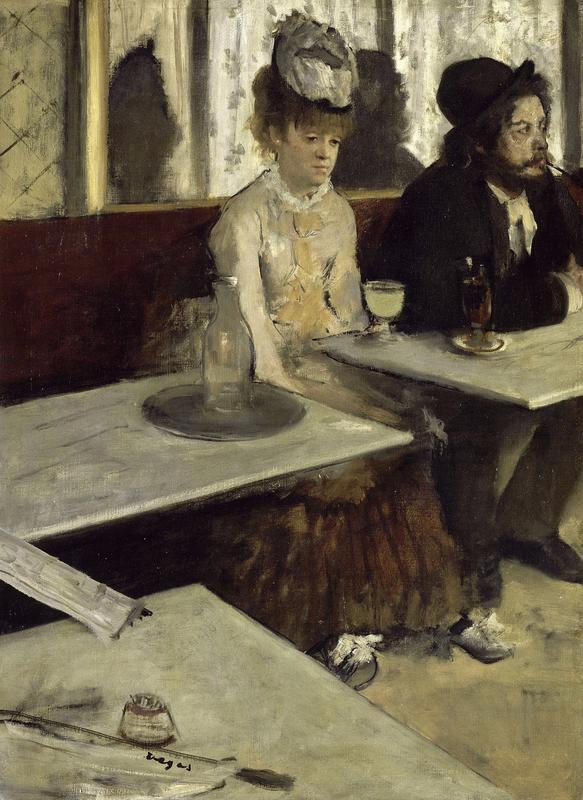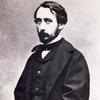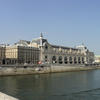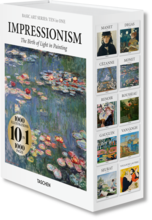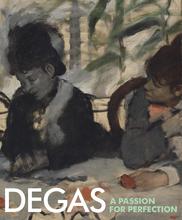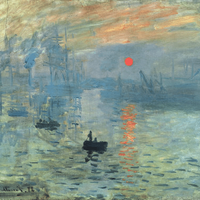More about In a Cafe
- All
- Info
- Shop

Contributor
What Degas intended to be a painting of bohemians at a coffee shop became a controversial depiction of alcoholism.
Originally titled Dans un Café (In a Café), this ill-received painting is now more commonly known as L’Absinthe (Absinthe) for the mysterious green liquid in front of the painting’s downtrodden heroine. The uproar surrounding the painting was pretty weird considering the drink was incredibly popular at the time. Degas didn’t want to stir up any controversy; he just wanted to depict an unhappy couple trying to fix their problems with something considerably cheaper and more accessible than therapy—alcohol.
Degas didn’t have a particular narrative in mind but knew he wanted to authentically portray Paris’ urban environment, one of his favorite subjects. He initially wanted to recreate an earlier painting titled Woman in a Cafe, but realized the lone figure could be perceived as a model and therefore take away from the realism of the scene. So he painted a pair of awkward lovers using two friends for models: Ellen Andrée, a theater actress and Impressionist model, and Marcellin Desboutin, a printmaking hipster-turned-painter.
Both Andrée and Desboutin were popular Parisian socialites unaware that the semi-portrait would be capable of causing a public uproar. As you can imagine Andrée was more than a little upset when Degas dressed her up in prostitute’s clothing and placed the cup of green liquid in front of her instead of Desboutin. She considered this damaging to her reputation- indeed, many viewers and critics did not refrain from calling her a “drunk” or a “whore.” Ouch.
Twenty years later In a Café was presented at an exhibition in England where viewers practically booed the painting off the easel, unaware that Degas had already moved onto different subjects and an entirely different artistic style. Weirdly enough, critics who previously trash-talked the painting at its first exhibition came to its defense in England, saying it demonstrated Degas’ artistic discipline. Art buyer Isaac de Camondo liked the commotion so much he purchased In a Café and added it to his collection of Degas that included The Dance Class and The Tub. Nothing like a little scandal to kick off your art shopping spree.
In a Café continued to spark conversation long after these exhibitions and even became the unofficial poster for the movement seeking to ban absinthe. The drink was banned from much of Europe and the United States in the early 1900s but thankfully those dark days are over. If you haven’t had a taste of the “green fairy” yet, we recommend the Corpse Reviver cocktail, which was probably was Andree’s character in the painting was drinking- after all, it looks like she could have used it! Cheers!
Sources
- Sutton Denys, Edgar Degas:Life and Work (New York: Rizzoli, 1986), 211.
- Werner Hoffmann, Degas: A Dialogue of Difference (London: Thames and Hudson, 2007), 202.
- Roy McMullen, Degas His Life, Times, and Work (Boston: Houghton Mifflin Company, 1984), 286, 292, 418, 463.
- Richard Kendall, Degas: Beyond Impressionism (London: National Gallery Publications, 1996), 166
- Jad Adams, Hideous Absinthe: A History of the Devil in a Bottle, (London: IB Tauris & Co, 2004), 54-55.
- Frank Swigonski, “Why Was Absinthe Banned For 100 Years? A Mystery as Murky as the Liquid Itself”, Mic Network, June 22, 2013.
Featured Content
Here is what Wikipedia says about L'Absinthe
L'Absinthe (English: The Absinthe Drinker or Glass of Absinthe) is a painting by Edgar Degas, painted between 1875 and 1876. Its original title was Dans un Café, a name often used today.
Other early titles were A sketch of a French Café and Figures at Café. Then, when exhibited in London in 1893, the title was changed to L'Absinthe, the name by which the painting is now commonly known. It is in the permanent collection of the Musée d'Orsay in Paris.
Check out the full Wikipedia article about L'Absinthe

